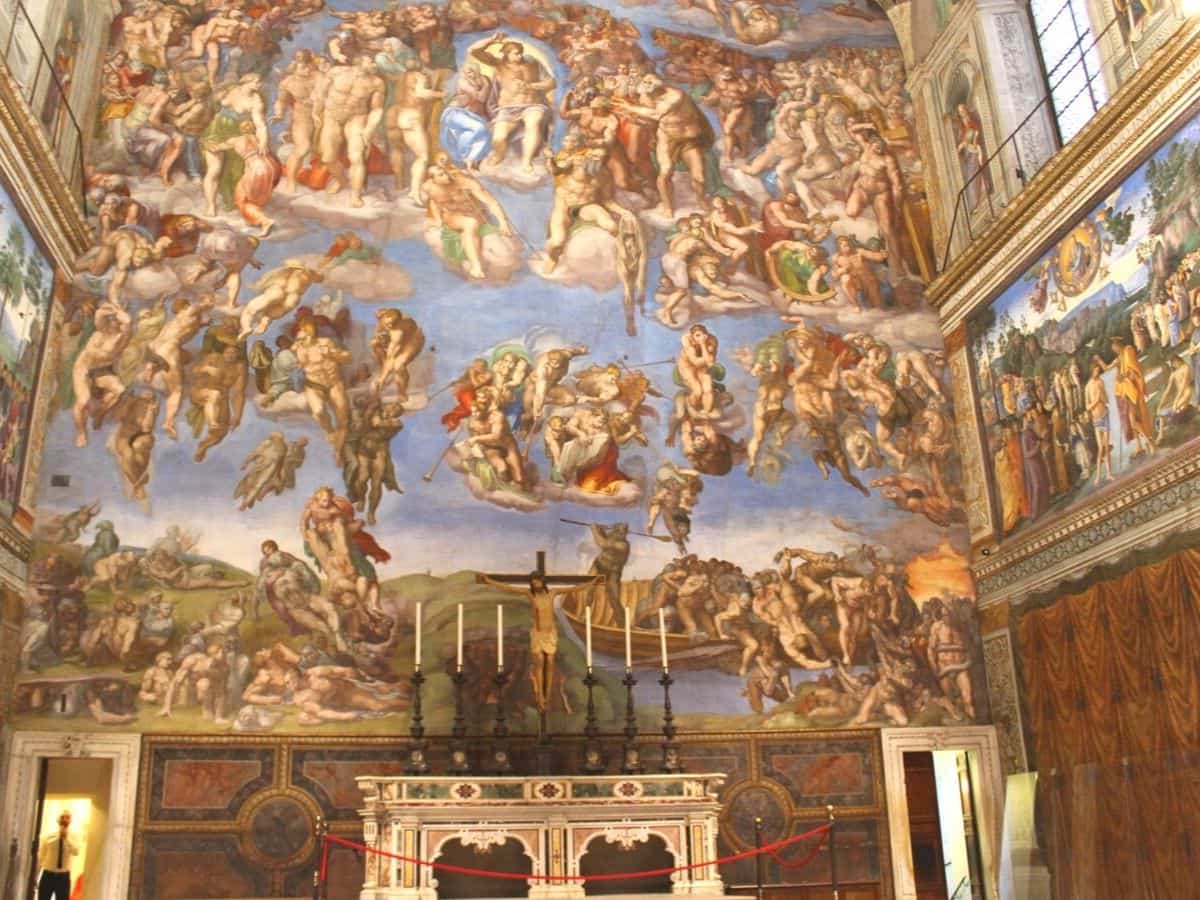Ah the Vatican, a whole country located within a city. The earth’s smallest country, with enough artworks and artefacts for the rest of the world and governed by the Head of the Catholic Church. Everything about the Holy See is peculiar and yet completely captivating at the same time. Make no mistake, no trip to Rome is complete with a tour of the Vatican. As official partners of the Vatican, we get to take our guests to restricted access areas of the Museums, tour the Vatican Museums before they even open to the public and provide faster than skip-the-line entry. There is nothing more awe-inspiring than experiencing the Vatican and all its mysteries first-hand, but until you get there let us inspire you with these weird and wonderful facts about Vatican City.
1. The smallest country in the world

The view overlooking St. Peter's Square from the dome of the Basilica
While this is a universally known fact many don’t realize just how tiny this miniature country really is. The Vatican State is a mere 0.17 square miles, less than 109 acres. This means that the Vatican State could fit inside Washington D.C. an astonishing 404 times. A tiny country with a worldwide impact, no doubt.
2. No passport checks
Although the Vatican is its own independent country, many visitors are surprised that there are no passport checks as you cross state lines. This might be slightly disappointing if you love to decorate your passport with stamps from all the different countries you have visited. However, just imagine the long lines that would occur if each of the 20,000 visitors to the Vatican every day had to go through passport control on their way in.
3. A UNESCO World Heritage Site
Vatican City is so rich in heritage, history and art that the entire country has been listed as a UNESCO World Heritage site. The UNESCO list of World Heritage Sites makes for a great bucket list of incredible natural wonders, historical hubs or artistic utopias for travelers. The aim of the organization is to protect and preserve places of cultural importance. And while Italy has more UNESCO sites that any other country, the Vatican State is the only country in the world that is listed as a UNESCO World Heritage site in its entirety.
4. It’s an artist’s paradise

Sistine Chapel in the early morning, on our Sistine Express tour
If you’re an art-lover, you need to book a guided tour of the Vatican. The Museums stretch an incredible 4.5 miles and comprise of 54 rooms. The Museums are home to over 120,000 pieces of art, although only about 70,000 of these works are on display to the public. With awe-inspiring works from some of the greatest painters in the art world, the opulent corridors of the Vatican are a utopia for art-lovers everywhere. From the Sistine Chapel and Raphael’s rooms, to St. Peter’s Basilica and the Gallery of Maps; marvel in the magnificence of these world-famous works on your Vatican tour.
5. No one is born in the Vatican State
Although the Vatican City is home to approximately 1,000 residents no one is born there. This sounds like a riddle doesn’t it? Unlike most other countries in the world, citizenship in Vatican City isn’t solely provided to people that are born in the country. As there are no hospitals in the Vatican State, virtually no one is born in there. Instead, Vatican citizenship is provided on a ‘jus officii’ basis. This means someone is made a citizen of the Vatican when they are appointed to work in the Holy See. Their citizenship ends when their appointment ends. These Vatican residents are given Vatican passports to use during the duration of their residency.
6. Education in the Vatican

Statue of St. Peter, located in St. Peter's Square at the Vatican
As the Vatican does not have an annual birthrate, there is no need for it to have a primary or secondary school education system. The majority of Vatican citizens are clergymen, cardinals and Swiss Guards so there is no need for a traditional education services in the state. That’s not to say that there is no education in the Holy See. On the contrary, the Vatican is a central hub for education in the Christian world. The Holy See controls about a dozen educational institutes offering courses in theology, philosophy and church history. All students are welcome to study at the Vatican regardless of if they choose to join the clergy or not.
7. The City of the Vatican
As one of the world’s most popular tourist attractions, it’s easy to forget that the Holy See is, in fact, a fully functioning city. Surprisingly enough the city has its own post office, known to be much more reliable than the post services in Rome. We recommend sending your postcards home from the Vatican to ensure they are delivered in a timely fashion. The city also has its own ATM machine but get this, it operates in Latin. That’s right, if you ever wanted to feel like you were traveling into a parallel universe seek out this cash machine to experience one of the oldest languages in the world being used in our modern-day technology. The state also has its own radio station. A highly sophisticated network, this station employees 200 journalists, reporting from 61 countries worldwide. This Vatican radio station broadcasts in 47 different languages.
These are just seven fascinating facts about the unusual Vatican State. If these have enticed you to learn more about this world-famous site or even inspired to visit Vatican City for yourself be sure to check out this range of our best Vatican tours, to discover the magic and mystery of the world’s smallest country in the company of an expert, Vatican official guide.


